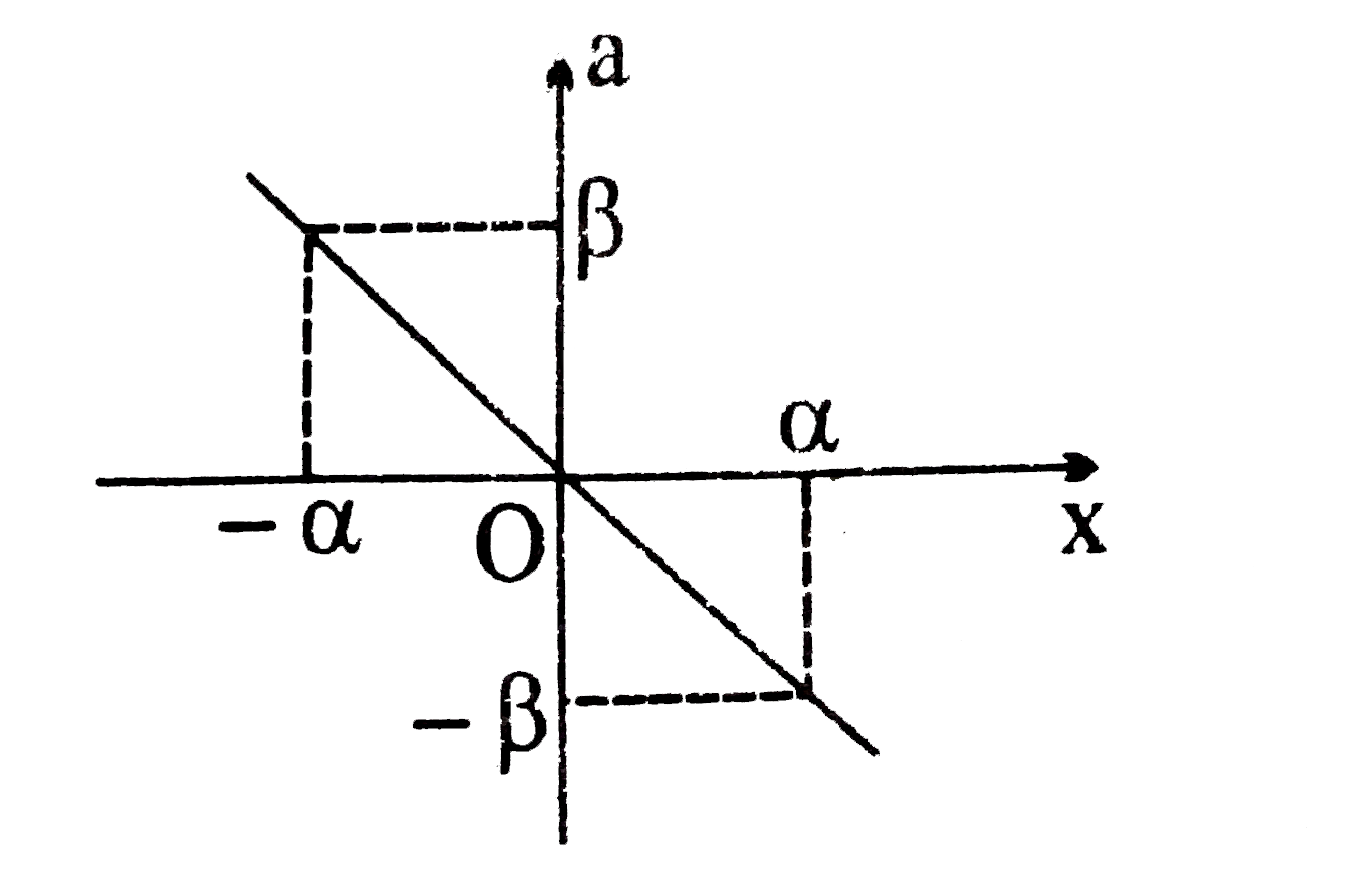A particle executing simple harmonic motion of amplitude 5 cm has maximum speed of 31.4 cm / s . The frequency of its oscillation is
3 Hz
2 Hz
4 Hz
1 Hz
The correct Answer is:D
To find the frequency of a particle executing simple harmonic motion (SHM), we can follow these steps:
1. Identify Given Values:
- Amplitude (A) = 5 cm
- Maximum speed (V_max) = 31.4 cm/s
2. Recall the Formula for Maximum Speed in SHM:
The maximum speed (V_max) of a particle in SHM is given by the formula:
Vmax=A⋅ω
where:
- A is the amplitude,
- ω is the angular frequency.
3. Relate Angular Frequency to Linear Frequency:
The angular frequency (ω) can be related to the linear frequency (N) by the equation:
ω=2πN
Therefore, we can rewrite the maximum speed formula as:
Vmax=A⋅(2πN)
4. Rearranging the Formula to Solve for Frequency (N):
We can rearrange the equation to solve for the frequency (N):
N=Vmax2πA
5. Substituting the Known Values:
Now, we substitute the known values into the equation:
N=31.4cm/s2⋅π⋅5cm
6. Calculating the Frequency:
First, calculate the denominator:
2⋅π⋅5≈2⋅3.14⋅5=31.4
Now substitute this back into the frequency equation:
N=31.431.4=1Hz
7. Final Answer:
The frequency of the oscillation is:
N=1Hz
- Amplitude (A) = 5 cm
- Maximum speed (V_max) = 31.4 cm/s
The maximum speed (V_max) of a particle in SHM is given by the formula:
Vmax=A⋅ω
where:
- A is the amplitude,
- ω is the angular frequency.
The angular frequency (ω) can be related to the linear frequency (N) by the equation:
ω=2πN
Therefore, we can rewrite the maximum speed formula as:
Vmax=A⋅(2πN)
We can rearrange the equation to solve for the frequency (N):
N=Vmax2πA
Now, we substitute the known values into the equation:
N=31.4cm/s2⋅π⋅5cm
First, calculate the denominator:
2⋅π⋅5≈2⋅3.14⋅5=31.4
Now substitute this back into the frequency equation:
N=31.431.4=1Hz
The frequency of the oscillation is:
N=1Hz
Topper's Solved these Questions
- SIMPLE HARMONIC MOTIONBOOK - ERRORLESS CHAPTER - SIMPLE HARMONIC MOTIONEXERCISE - simple pendulum
61 Videos
- SIMPLE HARMONIC MOTIONBOOK - ERRORLESS CHAPTER - SIMPLE HARMONIC MOTIONEXERCISE - spring pendulum
55 Videos
- SIMPLE HARMONIC MOTIONBOOK - ERRORLESS CHAPTER - SIMPLE HARMONIC MOTIONEXERCISE - Energy of simple Harmonic motion
34 Videos
- ROTATIONAL MOTIONBOOK - ERRORLESS CHAPTER - ROTATIONAL MOTIONEXERCISE - Practice Problems (Problems based on motion of connected mass)
10 Videos
- SURFACE TENSIONBOOK - ERRORLESS CHAPTER - SURFACE TENSIONEXERCISE - Exercise
214 Videos
Similar Questions
Knowledge Check
A particle executing simple harmonic motion of amplitude 5cm has maximum speed of 3.14cm/s. The frequency of its oscillation is
A3HzB2HzC4HzD1HzA particle executing simple harmonic motion of amplirtude 5cm has maximum speed of 31.4cm/s The frequency of its oscillation is
A3HzB2HzC4HzD1HzA particle executing simple harmonic motion with an amplitude 5 cm and a time period 0.2 s. the velocity and acceleration of the particle when the displacement is 5 cm is
A0.5πms−1,0ms−2B0.5ms−1,−5π2ms−2C0ms−1,−5π2ms−2D0.5πms−1,−0.5π2ms−2
A particle is executing simple harmonic motion of amplitude 9 m. At what point the speed of the particle will be one third of its maximum speed ?
View SolutionA particle executes simple harmonic motion with a of period of 6 s and amplitude of 3 cm. Its maximum speed (in cm/s) i
View SolutionA particle executing simple harmonic motion has an amplitude of 6 cm. Its acceleration at a distance of 2 cm from the mean position is 8cm/s2. The maximum speed of the particle is
View SolutionA block of mass m kg hanging from a verticla spring executes simple harmonic motion of amplitude 4 cm . If maximum speed of particle is 8m/s . Maximum acceleration of block is
View SolutionA 0.20kg object mass attached to a spring whose spring constant is 500N/m executes simple harmonic motion. If its maximum speed is 5.0m/s, the amplitude of its oscillation is
View Solution

